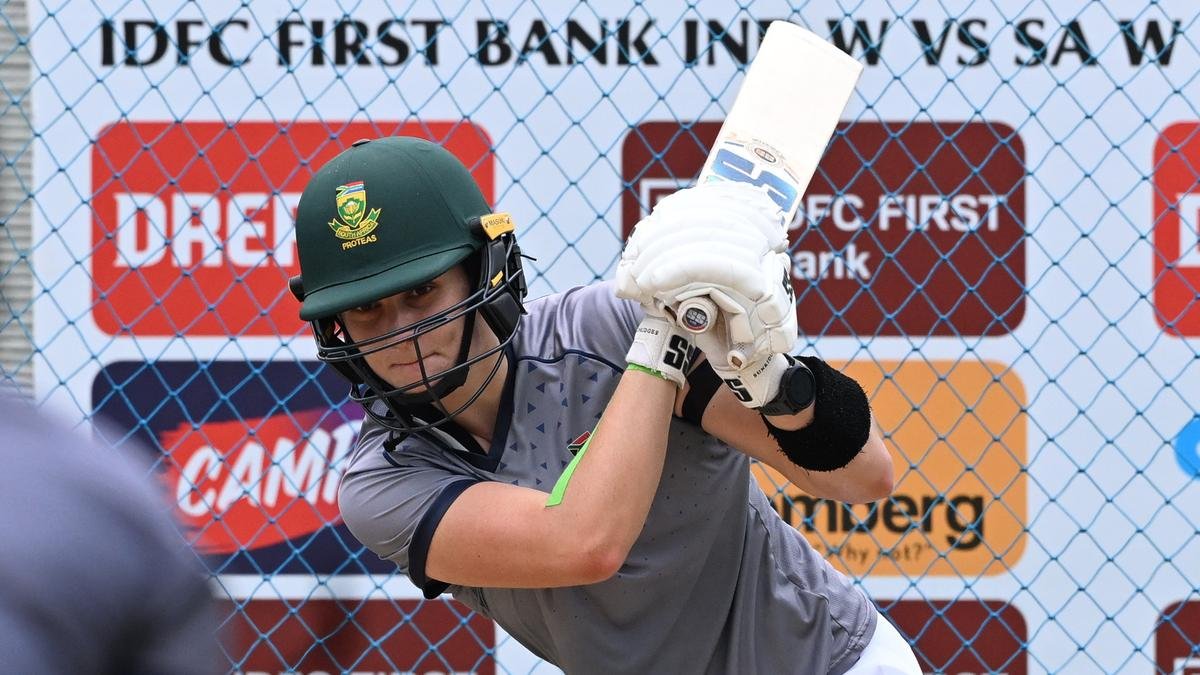When India and South Africa clash in the one-off Test at the M.A. Chidambaram Stadium in Chennai, it will be a battle of polar opposites moving towards one goal – red ball cricket becoming the norm rather than an eccentricity.
India has been unbeaten in Tests since 2006 when it beat England in Taunton by five wickets. It has since played six Tests with four wins and two draws.
Two of those victories came in December 2023, when India handed heavy defeats to England (by 347 runs) and Australia (by eight wickets), triggering massive confidence in India’s aptitude for the format.
That, in turn, made the Board of Control for Cricket in India (BCCI) announce a Senior Women’s InterZonal Multi-Day trophy, signalling the return of domestic red-ball cricket for women for the first time since 2018.
The BCCI’s calendar for the next season has seen the board revive the Senior Women’s Challenger too.
RELATED: A comfortable host, a nervy visitor and a dust colosseum waiting to challenge
Indian Test cricket for women is in a good place – with home wins, popularity among players and favour from the powers that be thanks to astounding results.
South Africa offers a stark contrast. The women’s side has featured in 14 Tests overall and won a solitary match, a 159-run-drubbing of the Netherlands in Rotterdam in 2007.
The side has six losses in the format and seven draws. After its loss to India in Mysore by an innings and 34 runs, it took eight years for the Proteas to feature in another multi-day international game.
The Sune Luus-led side fought out a draw against England after being made to follow on but fell to Alyssa Healy’s Australia earlier this year by a massive innings and 284 runs.
While the Proteas are only the fourth country behind England, Australia and India to commit to red-ball cricket at the international level, there has been little to no talk about setting up a framework for the format at the lower levels of play in the nation to blood talent with dedicated long-format skills.
The futility of such a non-holistic approach was not lost on the South African skipper Laura Wolvaardt when she addressed reporters ahead of its clash against India.
“Most of us do not have much preparation in the format. We don’t play domestic red ball cricket. Coming straight into an international multi-day format is difficult,” Wolvaardt underlined.
“For example, balls I have been cover-driving my whole life, I now need to leave. It’s a bit difficult for me because that happens on instinct and I have to fight the way I have been batting for the entirety of my career.
“We need to play more test cricket and incorporate it into our domestic system and practice or we must just leave it because playing one in three years is very hard to adapt to. But I am on the side to have more of it.”
South Africa will feature in three international red-ball games this year with England scheduled later in the year at home. However, a vision for a setup at the grassroots and development levels is not something Wolvaardt is hearing much about.
“I haven’t been part of any such conversations. But I hope they are happening. If we want to be competitive in international competitions, we need to have some kind of red ball preparation,” she added.
Meanwhile, India which once used to sing the same tunes, has benefited from authorities catching up with the nation’s ambitions.
“In December, we played against England and Australia; we played back-to-back Tests. We are aware that red-ball cricket will be a part of women’s cricket going forward, and hence I feel that the inter-zonal, which happened in March-April, was very critical,” India head coach Amol Muzumdar said two days before the Test.
“So that the players also get the message that it’s not just white-ball cricket or just T20s that we are focusing on. We are also focusing on the red-ball stuff, and I think they are aware and they are ready and raring to go in the multi-day format.”
Test matches, once the norm, also need context-setting particularly in a world where there are no international incentives to spend time and effort pursuing the format.
ALSO READ: IND-W vs SA-W: India banks on spin talent as women’s Test cricket returns to Chennai after 48 years
India, for one, hopes there is a World Test Championship equivalent in the women’s ecosystem to encourage more countries to come into the red ball fold.
“It’s not a bad idea to have Test Championships,” he said. “That’s something to look forward to, but that is for the board to decide. And if it happens, it’s even better for the game. Test cricket is always special,” Muzumdar added.
We like to keep it that way, that you know every game is important (regardless of the context) – whether it’s an ODI, T20 or Test match. I know there is no Test Championship to look forward to, but at the same time, every game is important. We take part to win.”
India captain Harmanpreet Kaur is a relative rookie in the women’s Test scene and has had to navigate its rollercoaster pathways with barely any experience captaining in this format.
However, coach Muzumdar and the senior think-tank have made this a format the skipper has enjoyed over time.




